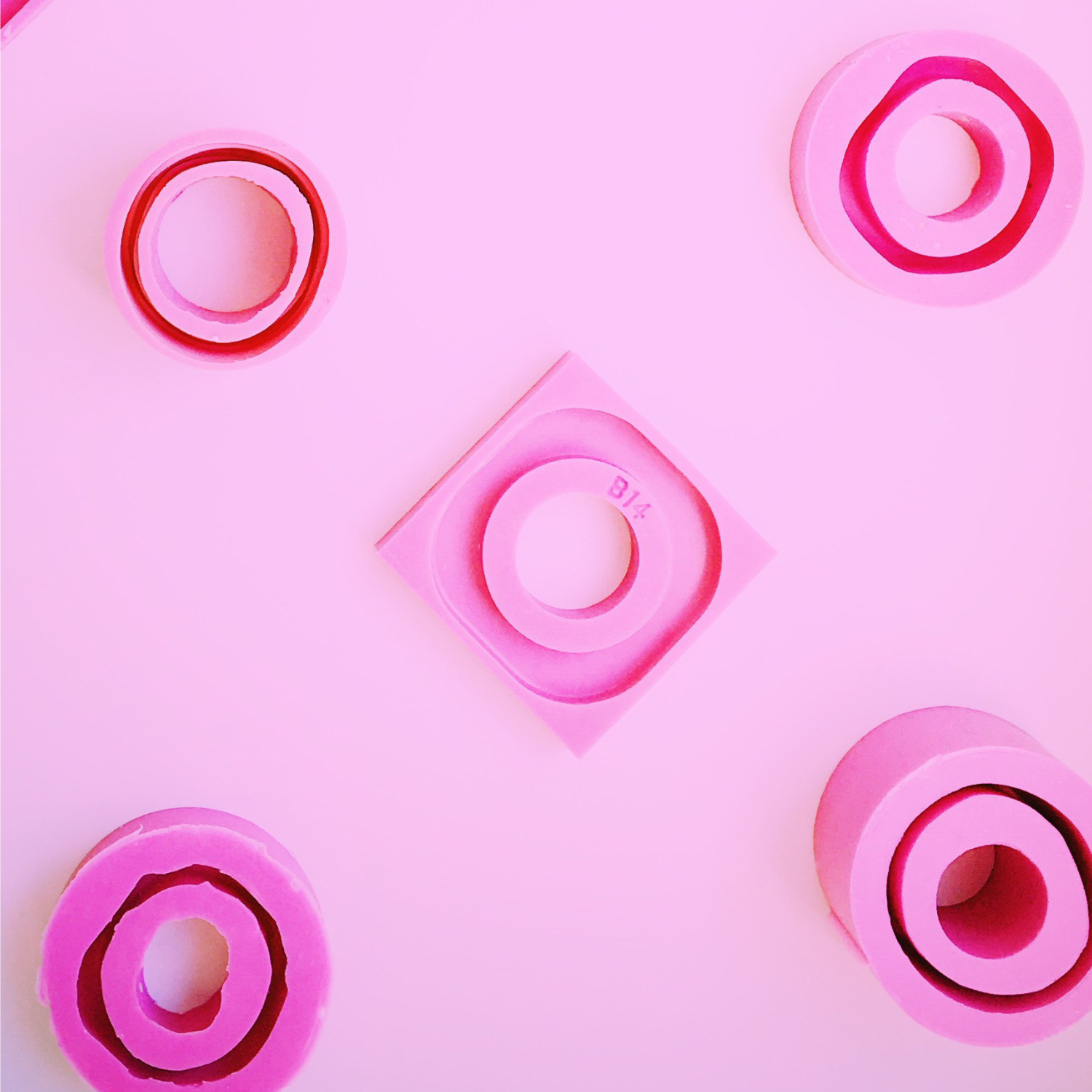Safety First!
Before using our products, please read the SDS and TDS, located under the product description on our websites. One of the amazing features about Barnes Pinkysil fast set silicone is that it is skin safe, however, it is not certified to be food or oven safe. Speak to our friendly staff in-store, or email tech@barnes.com.au for food safe silicone options to suit your project.
Choose your Item to Mould
Silicone moulds come in all shapes and sizes. Complex moulds can have multiple parts, and these are used when a shape has no flat side. For this project we a making a simple one- piece mould. The bangle that we have chosen has a flat side, which will be able to sit flush on our tile.
When choosing your item to mould test it on a flat surface to ensure that there will be no gaps between the item and surface.
Get ready to create
Prepare your workspace by covering your work surface with a plastic drop sheet. Silicone is not easily removable from clothing, so wearing an apron is advisable.
You will need your pre-prepared PVC pipe, small tile and oil-based clay, as well as your item to mould, mixing/measuring equipment and silicone.
Barnes Pinkysil works fast! Make sure you have taken time to fully set up your mould box before measuring or mixing your silicone.
Creating the Mould Box
There is more than one way to make a one- piece mould. As this project will focus on the creation of a bangle mould which is round in shape, we will use a cut PVC pipe to create our mould walls. Keeping the shapes similar will ensure we don’t waste any silicone. When choosing a pipe, make sure it is at least 1.5-2cm bigger in diameter than your bangle. Too small and you will not have enough space to create the mould, too big and you will be wasting silicone.
Cut down the side of the PVC pipe, then retape the sides together with tape. This will ensure that your silicone mould is easy to remove from the mould structure once it is cured.
Affix the straight side of the original bangle to the tile with a small amount of oil-based clay – make sure the bangle is flush to the tile with not much space in between. Try to make the clay that is in-between the tile and the bangle, is as smooth as possible, almost like a small extension of the bangle itself.
Roll out the oil-based clay into a snake like shape. Attach the PVC pipe to the tile (around the bangle) with the clay, making sure you have 1.5-2cm clearance around the edge of the bangle.
Seal the pipe to the tile, smoothing the clay down with your finger so that there are no gaps between the PVC pipe and the tile. When everything is secured, you are now ready to measure and mix your silicone.
Measuring and Mixing
Measure equal amounts by volume or by weight of Part A and Part B of Barnes Pinkysil in two separate 300ml measuring cups. To calculate the correct amount of silicone, you can use a formula to find the volume of the mould box, or you can start off with a lesser amount, and mix a second batch if needed. Silicone sticks to silicone, so underestimating your volume is not an issue.
Pour the measured Part A and Part B into a 600 ml measuring cup and stir quickly but thoroughly with a tongue depressor. Scrape the containers to ensure as much product is transferred to the mixing cup with minimal wastage. Transfer the mixed silicone into a second 600ml plastic cup for the final stage of mixing. This will ensure that the pink and white parts are completely crosslinking. You are looking for a homogenous soft pink colour, with no streaking.
Barnes Pinkysil has a six- minute working time in ideal temperature conditions, so the mixing stage should be completed in no more than two minutes.
Pouring
Pour the silicone in a steady stream in one spot into the mould pipe, over the bangle. Hold your vessel with the Pinkysil at least 15-20cm above the bangle to create a thin stream that helps eliminate bubbles. Fill until the bangle is covered ½ to 1cm above the top of the bangle. Don’t be overly concerned about surface bubbles on the back of your mould, these will not affect the outcome of your mould.
Curing
Wait half an hour in moderate conditions (temperature above 21 degrees C) before demoulding. Remove the plasticine and the mould pipe, then gently lift the mould up from the tile. The original bangle can then be removed from the tile.
The mould will be in a ‘green’ state for around 24 hrs, and it is advisable to wait until then to cast into your mould for the first time.
What’s next?
Now that you have made your mould, it’s time to think about casting into it, check out our Casting Resin Jewellery and Homewares project to learn more about resin casting.
Loved mould making? The sky is the limit! Check out our YouTube channel Barnes Moorebank for a detailed tutorial on making two-piece spherical bead mould.

